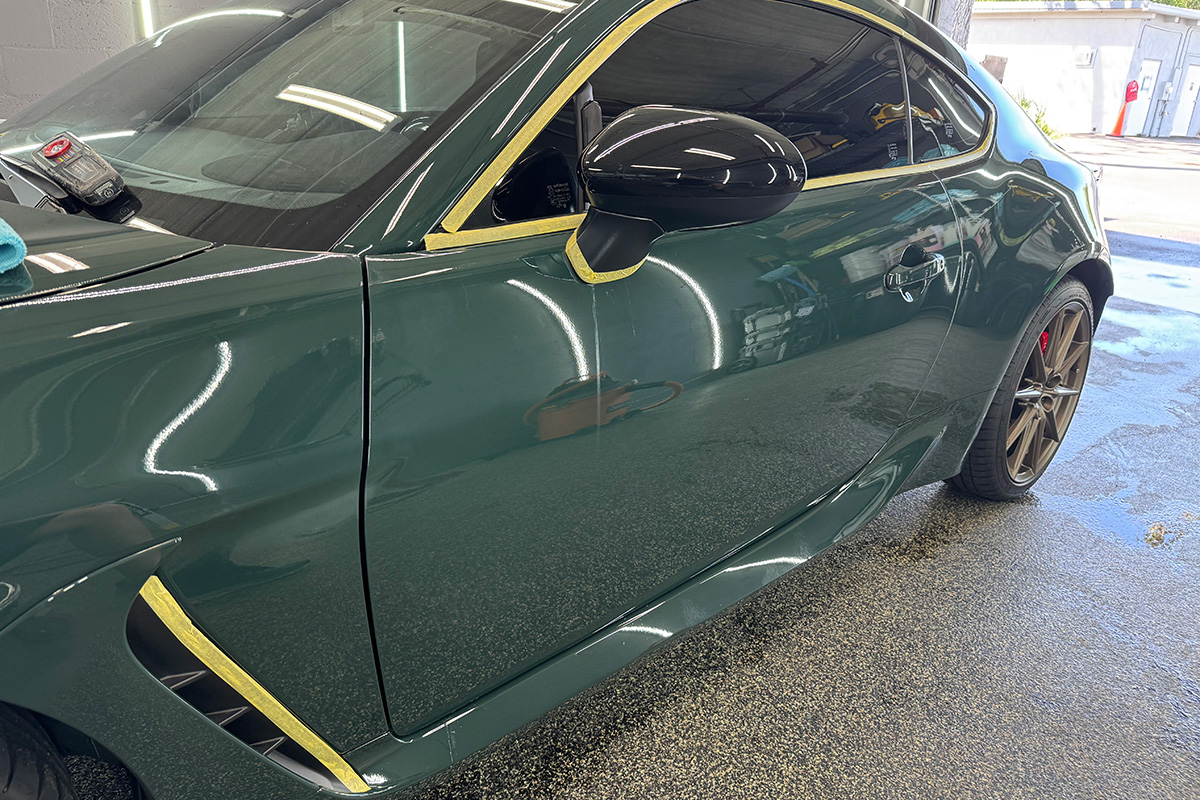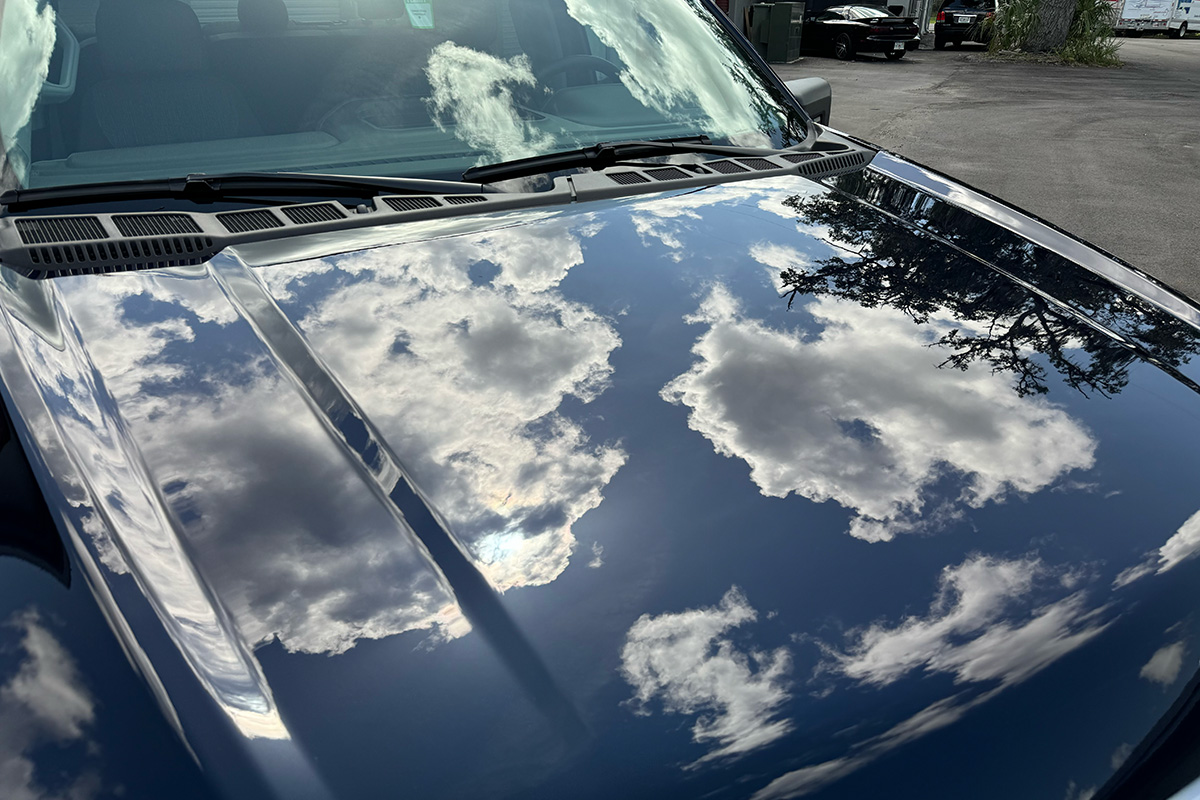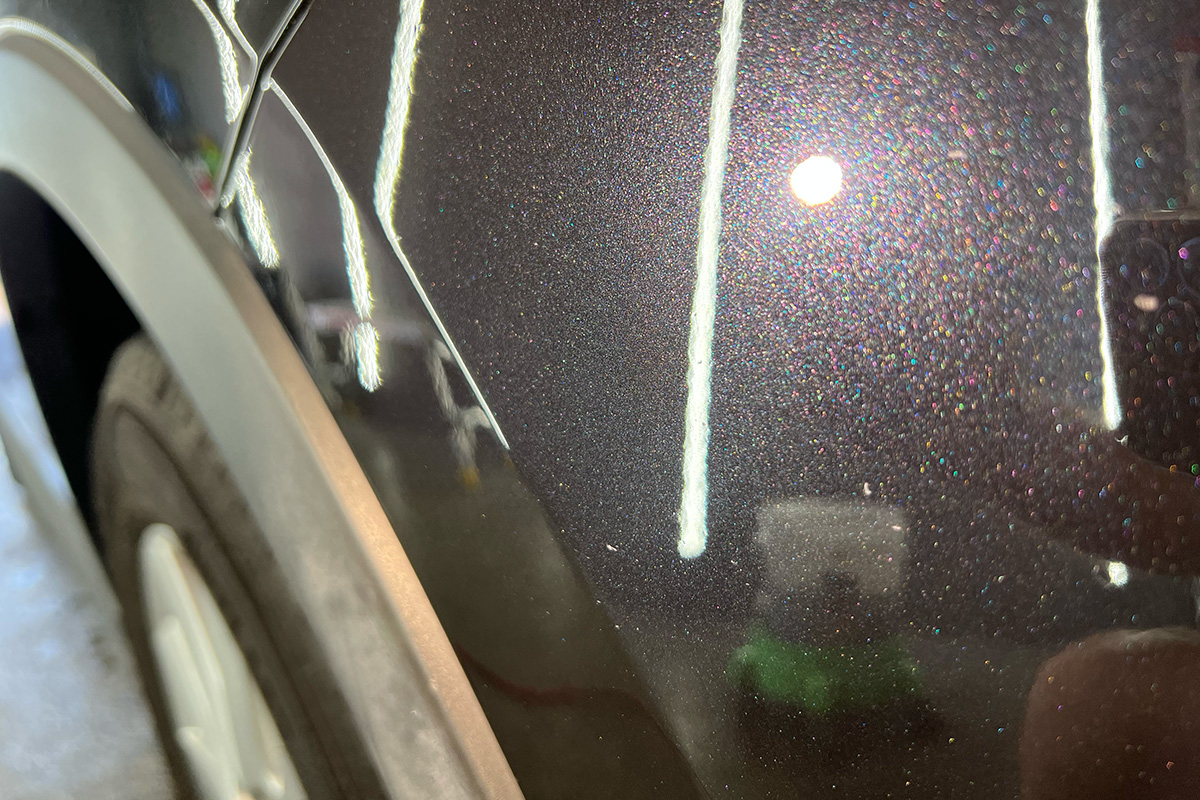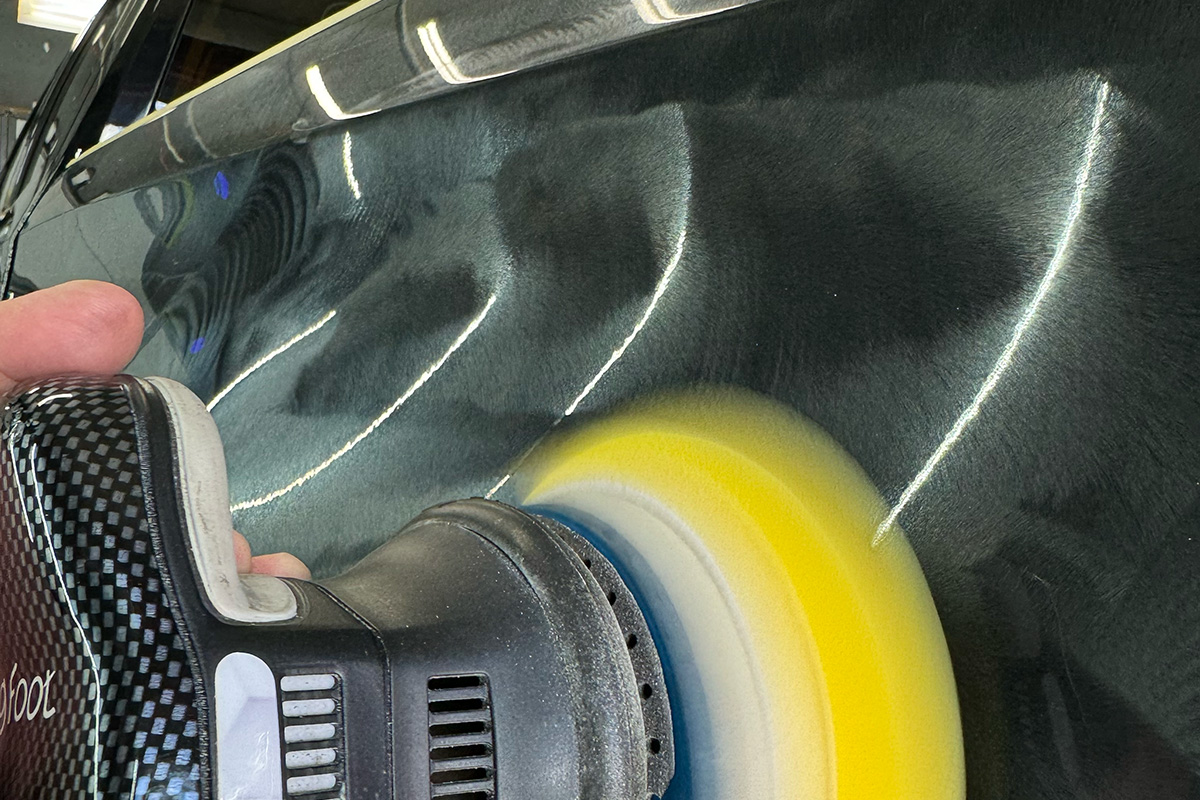When you bring your vehicle in for a professional paint correction, your focus is probably on the gloss, clarity, and removing those unsightly swirl marks and NOT taping off trim. But there’s a critical detail that often gets overlooked by less experienced or rushed detailers — and it can make or break the final result:
Taping off your vehicle’s trim and plastics before paint correction.

Take a look at the photo above — this is what attention to detail looks like before the polisher ever touches the paint. Yellow tape carefully protecting every edge of plastic trim. This isn’t just for show — it’s essential.
Here’s why it matters so much.
Plastic Trim Doesn’t Like Polishing Compounds
Plastic and rubber trim are porous, and when polishing compound or abrasive dust gets on them, they tend to stain, discolor, or develop a chalky haze that’s extremely hard (and sometimes impossible) to remove.
This is especially true for darker trims — they soak up residue like a sponge and end up looking faded or blotchy. Even worse? Some compounds actually etch into the trim, permanently damaging the surface.
Taping Off Trim Prevents Costly Mistakes
Proper masking with detailing tape is the simplest way to:
- Prevent polish splatter or staining
- Keep edges crisp and clean
- Avoid unnecessary time spent “trying to fix” mistakes afterward
While it may look like a small detail, taping off trim can save hours of restoration work and ensure the results look intentional and flawless.
It Shows You’re Working With a True Professional
A detailer who tapes off your trim, vents, rubber seals, and even emblems before correcting the paint is someone who:
- Takes pride in their work
- Understands the process from start to finish
- Prioritizes the long-term condition of your vehicle — not just the immediate shine
Skipping this step is often a sign of inexperience, rushing, or a lack of understanding of how different materials on your car react during polishing.
Taping Means Focused, Controlled Correction
When trim and edges are properly masked off, it allows the detailer to fully concentrate on the paint correction — with more control over the machine, better panel focus, and peace of mind knowing nothing delicate is being compromised.
It’s the small touches like this that separate a basic buff job from a true paint correction experience.
Final Thought
Paint correction isn’t just about making your car shiny. It’s a process that demands skill, patience, and attention to detail — and that includes knowing how to protect the rest of the vehicle during the work.
If the detailer you’re considering doesn’t tape off your plastics before polishing, ask yourself what else they might be cutting corners on.
Your car deserves better. Choose a professional who treats your vehicle with the care it deserves — right down to the tape lines.


